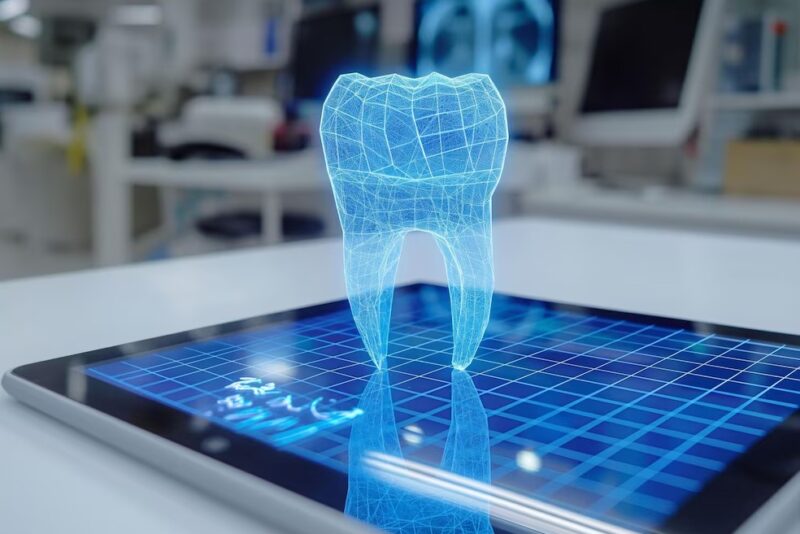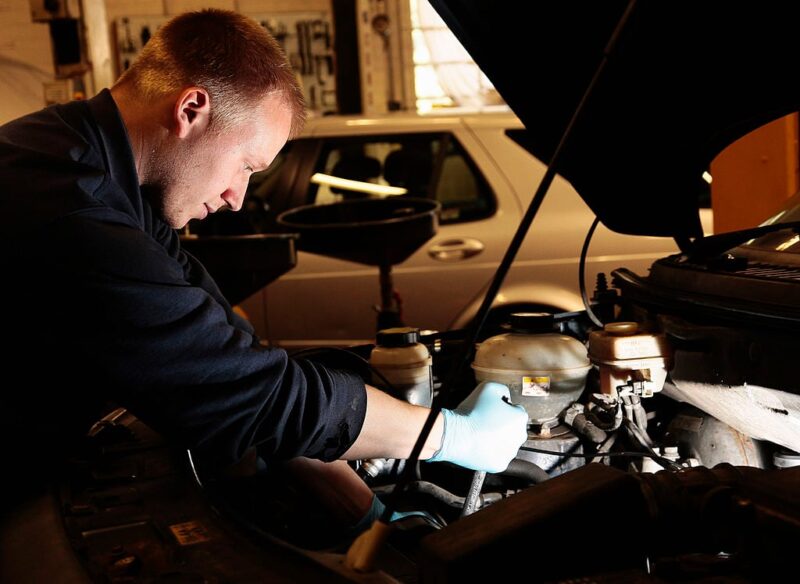Step into any forward-thinking dental clinic today, and you will notice a quiet but profound transformation taking place. The dentist’s tray, once filled with metal tools, plaster molds, and X-ray film, now shares space with 3D scanners, high-resolution monitors, and AI-powered software.
Dentistry is entering an era of digital diagnostics, an evolution that is reshaping how oral health problems are detected, understood, and treated.
At its core, the change is about precision and prevention. Modern digital tools enable dentists to spot issues earlier, plan treatments with unprecedented accuracy, and communicate findings more effectively with patients.
In 2025 and beyond, the difference between a traditional and a modern dental clinic will be defined not just by tools, but by the quality and speed of insight those tools deliver.
The Old Model: Art Meets Intuition
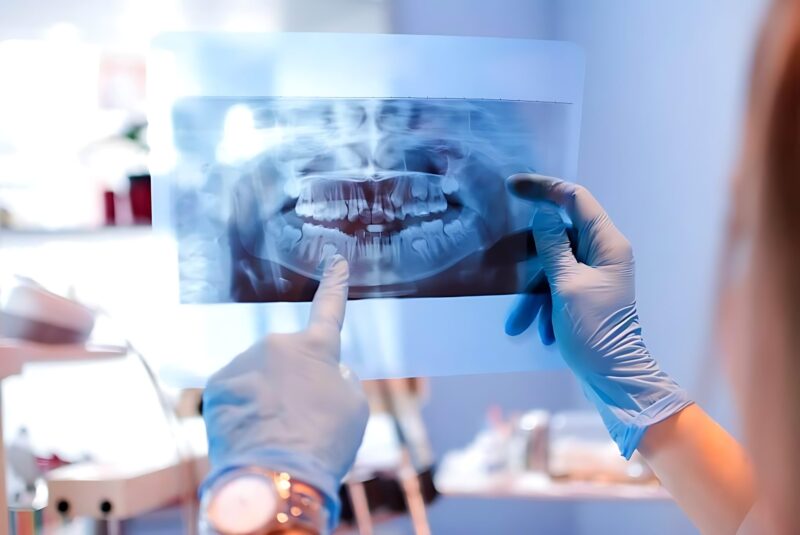
Before digitalization, diagnostics in dentistry relied heavily on clinical experience and subjective interpretation. Dentists used mirrors, probes, and two-dimensional radiographs to detect problems. While effective in many cases, this method had limits.
Early-stage decay, hairline fractures, and periodontal bone loss often remained invisible on standard X-rays. Moreover, diagnosis depended on the clinician’s eye and experience, leading to inevitable variation between practitioners.
In the analog model, time and manual skill were the primary diagnostic resources. Taking impressions with alginate, sending them to a lab, waiting for models to return, each step introduced small margins for error and delay.
Today, these limitations are being replaced by data-driven clarity.
The Digital Transition: Seeing More, Sooner
The first wave of digital transformation began with intraoral scanners. These handheld devices capture detailed 3D images of teeth and gums in real time, replacing the uncomfortable trays filled with impression material.
The advantages are obvious: accuracy, comfort, and speed. A scan that once took 15 minutes now takes less than two, and the resulting digital model can be stored indefinitely, shared instantly with labs, or integrated into treatment planning software.
Cone-Beam Computed Tomography (CBCT) marked the next leap. Unlike conventional X-rays, CBCT captures volumetric data, allowing dentists to see every structure in three dimensions.
This is especially critical for procedures like implant placement, root canal treatment, and detecting complex lesions.
With CBCT, clinicians can visualize bone density, root morphology, and sinus position, all from a single scan. The result is greater diagnostic confidence and safer, more predictable procedures.
Artificial Intelligence: The New Diagnostic Partner
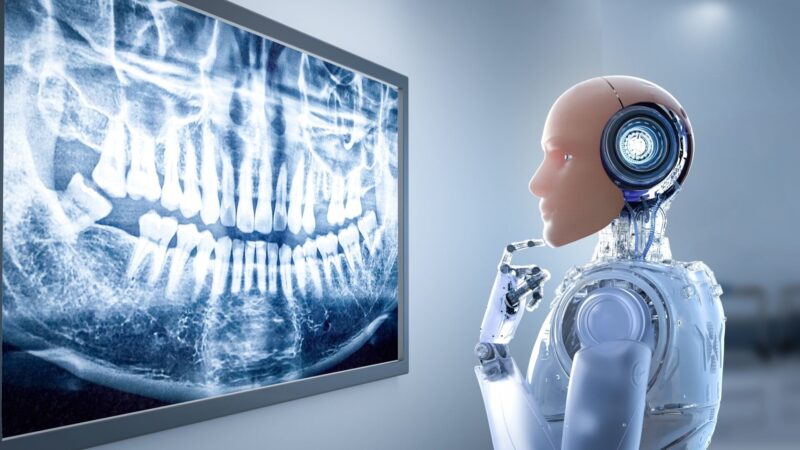
Perhaps the most transformative development in dental diagnostics is artificial intelligence (AI). AI systems are trained on thousands, sometimes millions, of annotated dental images.
They learn to detect subtle patterns, highlight abnormalities, and even suggest potential diagnoses.
For example, AI software can scan panoramic or periapical radiographs and identify early carious lesions, periapical radiolucencies, or periodontal bone changes that might escape a quick visual inspection.
Studies published in the Journal of Dental Research and Nature Scientific Reports show that AI-assisted interpretations can reach accuracy levels comparable to expert radiologists.
A new generation of platforms, such as Trust AI is bringing this technology to everyday clinical use. These systems serve as a “second reader,” providing annotated visuals that mark suspicious regions and measure radiographic parameters automatically. The aim is not to replace the dentist’s judgment, but to augment it, reducing oversight risk and improving diagnostic consistency.
The practical advantage becomes clear when you look at the daily workflow. Instead of manually interpreting each X-ray, the dentist can review AI-flagged areas, confirm or dismiss findings, and focus attention where it matters most. That shortens analysis time and raises diagnostic confidence, especially in busy clinics handling dozens of patients per day.
A Case in Point: When Digital Detects What Eyes Miss
Imagine a middle-aged patient comes in complaining of mild, intermittent discomfort around the lower jaw. The teeth look fine, and the gums are healthy.
A conventional X-ray shows no obvious issue. But a CBCT scan combined with an AI-assisted diagnostic platform reveals a faint radiolucency beneath the root of a molar, an early periapical infection beginning to erode bone tissue.
Because the problem is caught early, the dentist can treat it conservatively, preventing abscess formation or tooth loss. Without these tools, that lesion might have gone unnoticed until pain or swelling appeared weeks later.
This kind of early, data-driven detection is what digital dentistry now makes possible on a routine basis.
The Integration of Data and Workflow
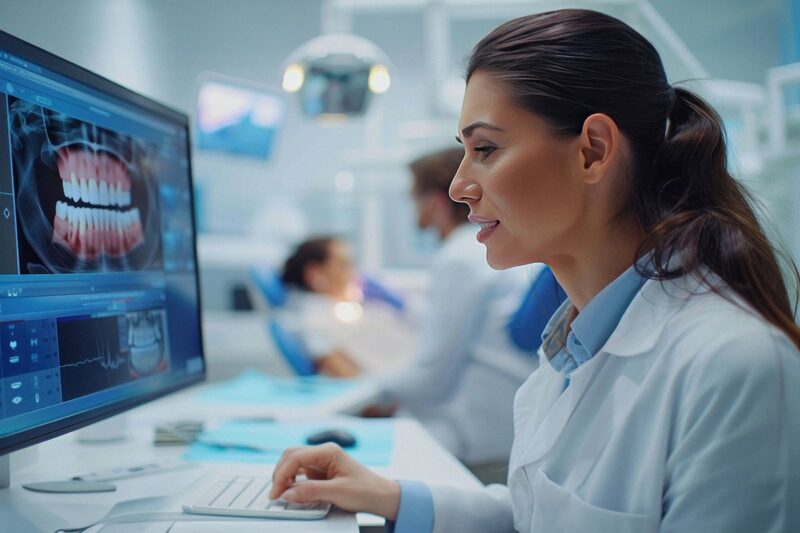
The real power of digital diagnostics lies not just in individual tools, but in how they connect. Modern clinics integrate intraoral scanners, CBCT data, AI analysis, and CAD/CAM (computer-aided design and manufacturing) into a single workflow.
- Scan – A 3D intraoral scanner captures digital impressions.
- Image – A CBCT unit maps the underlying bone and root structures.
- Analyze – AI software processes both datasets, detecting pathology or anatomical constraints.
- Plan – The clinician merges the data into CAD/CAM software to design restorations or surgical guides.
- Execute – The plan is implemented with precision, using guided surgery or digital fabrication.
This closed-loop system minimizes errors that once occurred during manual data transfers. It also means fewer appointments, faster restorations, and greater treatment predictability.
Real Benefits in Everyday Practice
The advantages of digital diagnostics extend far beyond the clinical image.
- Earlier detection: AI and 3D imaging allow clinicians to see disease processes in their earliest stages, leading to minimally invasive interventions.
- Improved communication: Patients can visualize their condition in 3D, increasing understanding and trust. A dentist can show exactly how bone loss is progressing or where decay is forming, something a 2D X-ray never conveyed clearly.
- Enhanced collaboration: Digital files can be shared instantly between clinics, labs, or specialists. Remote consultations no longer require mailing physical records.
- Better recordkeeping: Digital archives store complete patient histories, allowing longitudinal tracking of oral health and changes over time.
- Workflow efficiency: With digital tools, diagnosis and treatment planning can occur in the same visit, reducing turnaround time and improving patient satisfaction.
These practical outcomes explain why more than 60% of dental practices in the U.S. now use digital imaging as a diagnostic standard, according to 2025 ADA data.
Challenges and Responsibilities
Despite the clear advantages, the transition to digital diagnostics isn’t without hurdles.
Cost remains a major factor. High-end CBCT units can cost over $100,000, and advanced AI software often requires ongoing subscription models. Smaller practices must weigh these expenses carefully against potential efficiency gains.
Data management and privacy also matter. Digital images contain sensitive health information that must be securely stored and transmitted in compliance with privacy laws like HIPAA or GDPR.
Another issue is training. The most powerful digital system is only as effective as its user. Clinics adopting these tools must invest in continuous education to interpret AI outputs correctly and avoid overreliance on automation.
Finally, regulation and validation lag behind innovation. AI-based diagnostic systems must undergo rigorous clinical testing to earn medical device approvals. The profession is still defining where responsibility lies when an AI recommendation conflicts with a human diagnosis.
What the Next Decade Could Bring
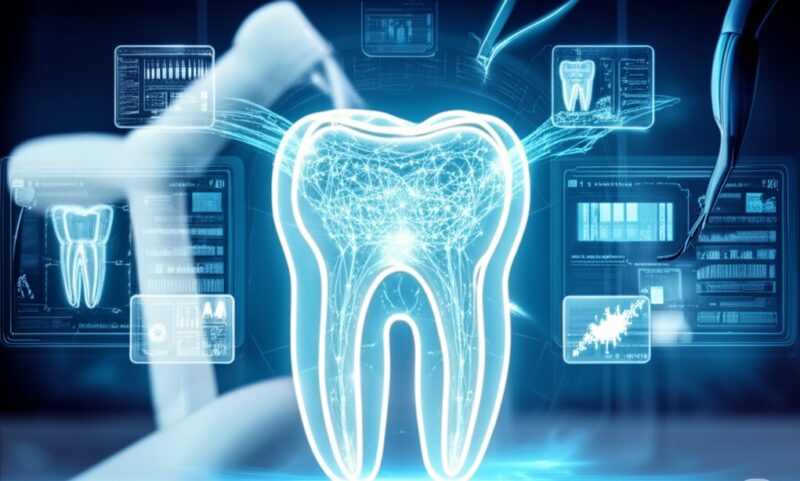
Looking ahead, the convergence of AI, imaging, and robotics will push diagnostics into new territory. Real-time interpretation is on the horizon, AI that analyzes intraoral scans as they are captured, guiding the dentist in real time toward areas of concern.
Researchers are also developing multimodal systems that combine visual, radiographic, and biological data (such as saliva biomarkers) to predict disease risk before visible symptoms occur. That’s where preventive dentistry could truly outpace reactive care.
We may also see growing use of augmented reality (AR) overlays in clinical environments. Dentists could soon visualize bone structure, nerve pathways, or implant trajectories directly over a patient’s scanned image during treatment.
The future is not about gadgets, it’s about building a diagnostic ecosystem where every image, scan, and analysis contributes to faster, safer, and more informed decisions.
The Human Element Still Matters
Even as algorithms and 3D scanners advance, the human role in dentistry remains essential. Technology can process data, but it cannot feel empathy, build patient trust, or make ethical decisions. The best outcomes still come from the union of digital precision and clinical intuition.
Modern tools help remove uncertainty, but the dentist’s understanding of anatomy, behavior, and context gives meaning to the data. The art of care remains rooted in the relationship between patient and professional; digital tools simply sharpen that connection.
The Bottom Line
These technologies don’t just make dentistry more efficient; they make it more predictive, personalized, and transparent.
The clinics leading this transformation aren’t just adopting new tools; they’re redefining what quality care means. The goal is no longer just to fix what’s broken, but to foresee problems before they start.
That’s the promise of digital dentistry: fewer surprises, healthier outcomes, and a clearer, smarter way to care for every smile.
Related Posts:
- How Elon Musk’s Inventions Are Transforming The World
- Transforming Your House Into A Home: The Complete Guide
- How Long Does a Dental Filling Procedure Take - 2024 Guide
- Top 10 Technical Analysis Tools for Traders
- Inexpensive Tools for Stunning eCommerce Photography at Home
- 5 Useful Tools That Will Improve Your Writing Skills…

